There is an incredible number of reasons why you will want to visit Tokyo. Whether you are looking for an incredible culinary experience or looking to immerse yourself in Japanese culture, Tokyo is filled with so many options that are coincidentally also close to some the best boutique hotels in Tokyo. There are hotels near the Tokyo Station and other great options spread across the city.
This guide will introduce you to the best hotels in Tokyo along with sharing information about the city’s different neighborhoods to help you plan your own vacation. We have also included some great tips and tricks for you to make the most of your visit to Tokyo and also details of what to see and how to get to the key highlights in each neighborhood after you have reviewed nearby places to stay in Tokyo.
Read more about Japan
- Looking for suggestions for the best places to eat in Tokyo?
- Getting around Tokyo by train
- 12 day Japan itinerary
- Top ramen shops in Tokyo
Where to book your stay in the Tokyo?
- If you’re looking for great places to stay, my recommendation is to take a look on Booking.com whether you’re staying in Tokyo, Osaka, Kyoto, or Hiroshima. They’re probably the most versatile hotel platform now mainly because they not only have a big hotel inventory but they also have a ton of B&Bs as well.
In This Article
Where to stay in Tokyo
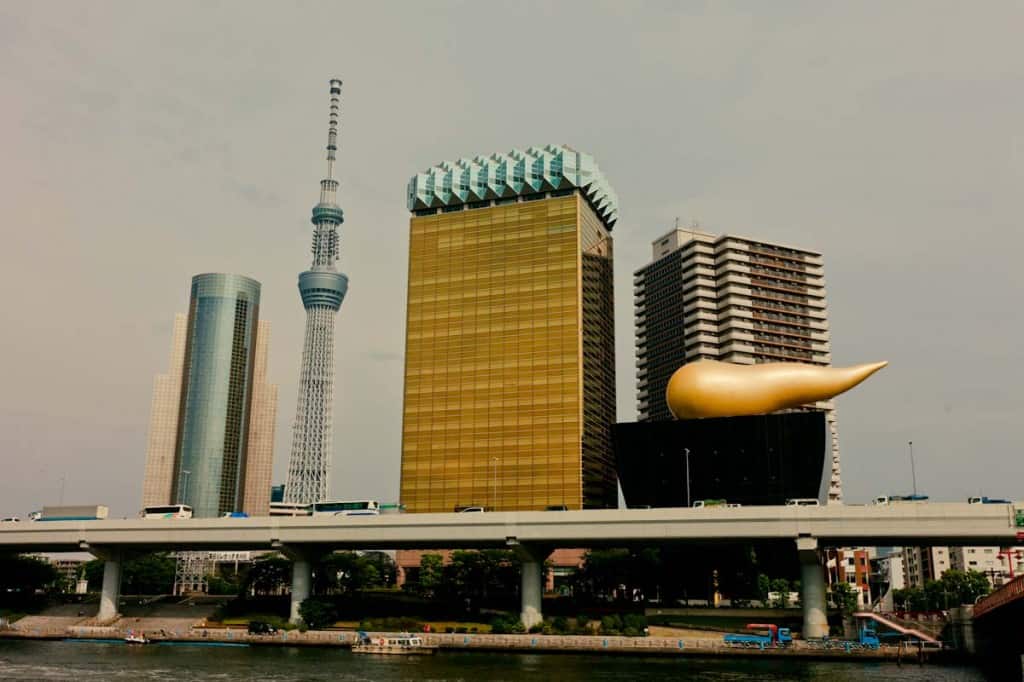
With so many great options, choosing where to in Tokyo can seem difficult, here is some guidance to help you choose where to stay in Tokyo from small boutique hotels in Tokyo to hotels near Tokyo Stations designed to help simplify your decision-making process when choosing where to stay in Tokyo.
One thing I’ll preface off the top is that this is by no means a complete look at ALL neighborhood in Tokyo. If I included the smaller obscure areas, this guide would be way too long. These are the main neighborhoods that you’ll want to stay in while staying central to Tokyo.
Also, there’s a difference between prefecture and what I’m calling a neighborhood as you’ll see in the map a little further down. A prefecture is more of an administrative division which combines multiple neighborhoods together. They cover a larger area and so not necessarily as useful when it comes down to planning a trip to Tokyo.
The Main 8 Neighborhoods
Here are the most popular neighborhoods that you may want to consider visiting after finding places to stay in Tokyo:
- Shibuya – The two busiest railway station in the world and the busiest pedestrian crosswalk are found in this neighborhood making it a great place to people watch, but you will also want to watch plays, go shopping and enjoy upscale dining in this neighborhood.
- Harajuku – If you love Japanese street fashion, then you will love this neighborhood where you can also visit an art museum, take in sporting events and explore a Shinto shrine.
- Ebisu– Popular with expats, this neighborhood has a laid-back vibe, but you can find great places to eat along with visiting the tachinomiya standing bars.
- Shinjuku– Part red-light district and part governmental buildings, this neighborhood that is one of the highest in Tokyo is home to many different universities giving the area a young vibe.
- Ginza – This upscale neighborhood is home to many luxury flagship stores along with department stores, and it transforms into a daytime pedestrian haven on the weekends.
- Roppongi – For many years, this neighborhood has enjoyed its internationally popular foreign nightclubs and cuisine along with a growing number of festivals.
- Ueno – This neighborhood is one of the best for tourists to find many sights within Ueno Park along with numerous Buddhist and Shinto temples.
- Asakusa – This neighborhood hosts frequent matsuri festivals along with being a great place to connect with Japanese home decor and local films.
- Akihabara – The anime, manga, and electronics capital of Tokyo. It’s where the neighborhood lives and breathes otaku (diehard fan) culture.
3 Quick Travel Tips About Tokyo
How to Get Around
In many ways, Tokyo is like many interconnected cities. Since you may want to visit many of them during your trip while choosing the best hotels in Tokyo to stay in, it is important to learn how to move around the city efficiently.
Trains
About 70 percent of all commuting in Japan is done on trains. They carry approximately 40 million people daily. If you will be riding the Japan Railways (JR), then buy a Japan Rail Pass before you leave home but only do so if you plan on travelling to other parts of the country. The JR Pass is available for periods covering seven, 14 or 21 days.
Alternatively you can also buy an IC card such as PASMO and SUICA. You can get these at the rail stations where you will choose the amount that you want to load. These cards are cards that can used to make purchases at convenience stores and across multiple different lines by different companies.
Pick up your JR Pass
If you’re planning a trip to Japan, and going to a number of cities, you’ll likely need to pick up a JR Pass
Subway
What makes getting around Tokyo complicated is the fact that not only are there multiple lines, but they are run by different companies. When you take a look at the Tokyo subway map, you can see the tangled web of the 278 stations on 13 different lines but you have to realize these only focus on the Tokyo Metro and Toei companies that work together. Then you have Odakyu, Keisei, Tobu and others that operate in and out of the city.
If you think you will be able to stick to one company (i.e. Tokyo Metro + Toei is what I recommend), you can buy day passes. Otherwise, look at investing in an IC card (PASMO or SUICA) to be agnostic to the companies. You’ll have to pay a deposit for a card and load money into it but after that, all you have to do is tap and go.
Uber
Uber is another travel option when visiting Tokyo. This city is the only one in Japan with Uber, and it works more like a taxi-hailing app. The company does require all of its drivers to speak conversational English, which can be an added advantage.
Taxis
There are more than 30,000 taxis available across Japan’s 47 prefectures. You can use an app to hail one or just stick out your hand and one will stop if you are in a busy area like those surrounding the best hotels to stay in Tokyo.
Japan Trip Planning Essentials and Discounts
If you’re in the middle of booking your trip to Japan, here are the most important places you need to go to book:
- JR Pass – The two most reliable places we always check are JRailPass and JRPass. If you are taking long distance Shinkansen across multiple region, get the full JR Pass. If you’re focusing on one specific area, you only need a JR regional pass.
- Shinkansen – The JR Pass prices have gone up and for many of you, it’ll make more sense to book tickets individually. The secret is that when you buy your Shinkansen tickets through Klook offers special vouchers for Don Quijote and BIC when booking. Their tickets are super easy to redeem as well. Right now, use code SKS10OFF to save $10 USD off.
- Hotels/Ryokans – In Japan, the best website for accommodations, hands down is Agoda. When we’ve compared them against Booking, Agoda consistently came out cheaper.
- Tours – While Viator and GetYourGuide are our go-to’s, Klook and KKDay are much popular in Asia so it’s always worth comparing across all of them to make sure you get the best price.
- Pocket Wifi – While we do love eSIMs, having a pocket wifi is great for sharing data with a large group. The most popular is NinjaWifi which is easy to pick up at the airport. Use code AWESOME15 to save 15% (automatically applied). Alternatives are offered by JRPass and JRailPass but they aren’t as cheap. For a more global solution, consider Solis and PokeFi.
- eSIM – The best one is Airalo. Save money by getting the Japan region eSIM and use referral code WILLIA9500 to get $3 USD credit on your first purchase. From now to Feb 29, the 10GB package is half price as well! Ubigi is another one that we’ve had success with where they uniquely offer 5G coverage. Use code AWESOME10 to save 10% on your first order.
- Car Rental – Big companies like Budget, Avis, and Enterprise operate in Japan but they’re usually the most expensive. The best companies are the local Japanese ones such as Toyota Rentacar, Nippon Rentacar, Orix Rentacar, Nissan Rentacar, and Times Car Rental. To make things easier, use Rentalcars and Klook to compare prices all in one place. Don’t forget, you need an IDP to drive in Japan so get one before you leave your home country.
- Learn Japanese – It helps to know even a bit of the language before you go. Start your learning with Rosetta Stone Japanese.
- Cash or credit – Cash is still very important to have in Japan but when you use credit cards, make sure you’re not getting charged those extra exchange rate fees. The best card right now is the Wise Multi-Currency Card which is actually a debit card where you can convert at favorable rates beforehand. This cuts out any sneaky transaction fees.
- Travel Insurance – Make sure you’re covered in case something happens. Get quotes from Insured Nomads and if you’re from Canada, get quotes from RATESDOTCA.
- Shopping – Discovering Don Quijote is a quintessential part of the Japan experience. The secret for tax-free shopping is that they have a coupon that can help you save 10% off + additional 5% off if you spend ¥10,000 or more.
Neighborhood Map
The below is a map of all the major neighborhoods of Tokyo. As you can tell, there are quite a number of them and it just shows you how massive the sprawl is. Of course, we’re only going to be focusing on 8 in the main core.

Plan Your Trip To Tokyo
There are many tips that will want to keep in mind to make your trip to Tokyo even more enjoyable including:
Tips – Tokyo servers do not expect or want tips so be happy to not have to pay anything in addition to the bill at the end of a meal.
Carry Your Trash – Trash cans are hard to find in Tokyo, but you will not want to litter. Instead, you are expected to carry your trash with you until you can dispose of it properly.
Keep to the Left – Pedestrians on sidewalks in Tokyo walk on the left. If you decide to stop, even on an escalator, then keep to the left and walk to the right.
Get a pocket wifi – To stay connected in Japan, you’ll be looking to either pick up a local pocket wifi device or bring your own such as the Skyroam. For something local PUPURU is one that you can pick up and drop off easily at the airport. Their rates are also quite competitive (700 JPY = $8 USD a day). If you’re too cheap for data, there are luckily many places in Tokyo where you can connect to free WiFi.
Dress Conservatively– Japanese people dress very conservatively, and men and women often dress up. Showing cleavage as a woman is something you do not want to do.
Carry Your Hotel’s Business Card – Carry your hotel’s business card with the address written in Japanese with you at all times. While many people speak some English, it is not a requirement for taxi drivers.
Bring Small Gifts – You will want to pack along small gifts, like magnets and postcards, as it is expected that you will give away these gifts anytime that a local help you.
Cash or Card – Tokyo is very credit card friendly when it comes to restaurants and big establishments however if you’re going to be spending a lot of time at say the local markets, buying street food, and going to spots like Piss Alley, you’re safer off carrying some cash.
ATM Fees – The best ATM’s to use in Japan are the ones found in the 7-Eleven which seems odd to say. They have never rejected foreign debit cards from my experience but you do have to be careful that they charge a 216 JPY fee.
#1 Shibuya
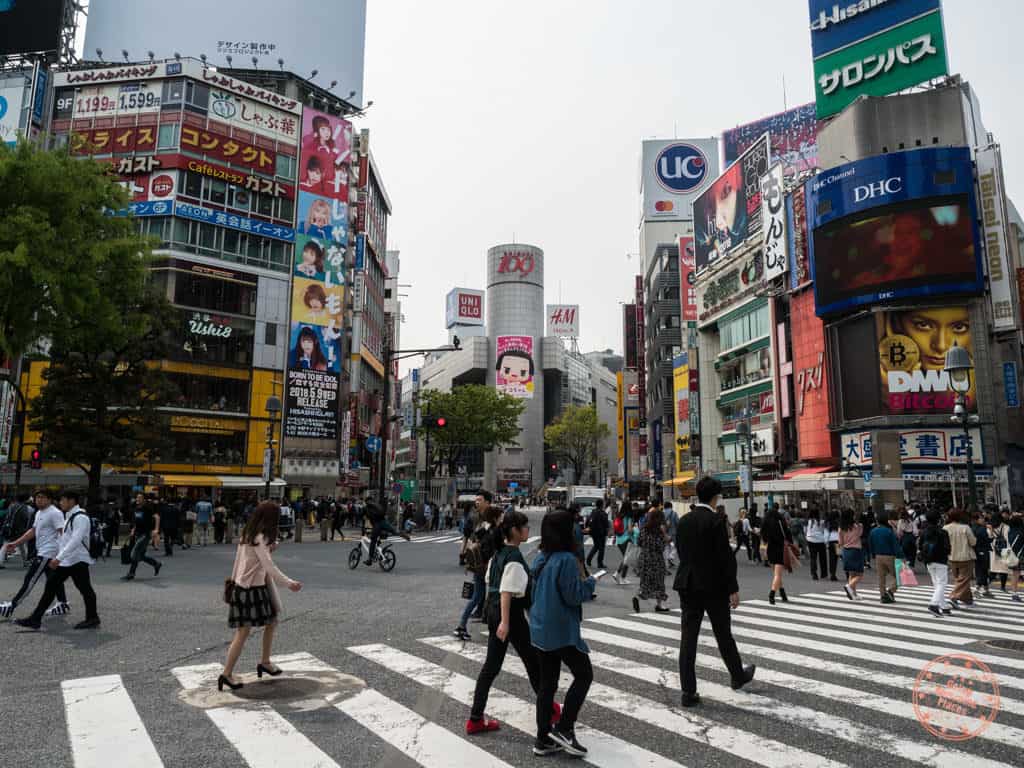
What’s There And Why Visit
This neighborhood has a young vibe, but even if you do not fit that category anymore, you will find plenty of places to shop and things to do in Shibuya.
This is also a great place to get an introduction to Japanese culture. There are many upstart clothing shops, but this neighborhood is also home to one of the largest traditional Japanese performing arts troupes and an exciting museum of art.
Suggested hotels near Shibuya
BUDGET FRIENDLY

Located 10 minutes away from Shibuya Station, all rooms feature free wifi, equipped with a refrigerator, and some rooms even have a balcony. As a relatively new hotel, all rooms are impeccably clean and modern. Great for walking in Shibuya and Harajuku.
LUXURY

Luxurious and spacious hotel with epic panoramic city views. This property has their own fitness centre and swimming pool on the 3rd floor. You’re also 5 minutes away from Shibuya Station which makes it incredibly convenient.
Things to see near Shibuya
Shibuya Crossing – The one and only free-for-all street crossing is right above the Shibuya station. There’s no shame in having fun with this wile you’re here.
Yoyogi Park – This is a great place to have a picnic in Tokyo. You can see some cherry trees here during the spring while the ginkgo trees turn a beautiful golden color in the fall.
Meiji Shrine – Dedicated to honoring Emperor Meiji and the Empress Shoken, this shrine was originally constructed in 1920 and rebuilt after World War II. See over 10,000 trees collected from across Japan along with visiting the Inner Gardens in June when the irises are in bloom. Located within the park is Meiji Jingu Treasure House where you can see many of the first emperor’s personal items including his carriage.
Shibuya 109 and 109 Men’s – This is where the gyaru subculture started, and it is still a fantastic place to get Japanese fashion with this classic department store
National No Theater – This theater is a beautiful place to experience No plays. Most performances will include two plays with a short humorous kyogen piece in the middle. Men play all roles during these plays. Even if you can’t understand all the words, this is a great venue to visit.
Ukiyo-e Ōta Memorial Museum of Art – The woodblock art presented from this museum’s 12,000 piece collection makes it a great place to visit.
Getting there
Yoyogi Park – Exit the station and walk to the west until you reach this park.
Meiji Shrine-Walk west from the Sendagaya Station until you reach your destination.
Shibuya 109 and 109 Men’s– Get off at the Harajuku Station and walk south until you reach this destination.
National No Theater – Exit the Sendagaya Station walking northwest, turn left at the second corner, and walk ahead until you see your destination about a block away on your right.
Ukiyo-e Ōta Memorial Museum of Art – Exit the Meiji-jingumae Station and head southeast until you reach ZARA Harajuku, then walk north until you reach your destination on the left.
Suggested activities in Shibuya
Walking Food Tour of Shibuya At Night – This 3 hour walking tour takes you through various eateries to try favorites such as ‘takoyaki’ (octopus balls), ‘okonomiyaki’ (savory egg pancakes), Kobe beef skewers and more in the area’s off-the-beaten path hangouts.
Shibuya Official Walking Tour – Explore the streets of Shibuya with a local to learn about the history of the neighborhood, the crossing and go explore local bars and restaurants. This is your chance to learn and ask about what to see, do, and eat.
Kimono Rental and Photoshoot at Shibuya Crossing – Wear a traditional Kimono and have a professional photoshoot while on the Shibuya crossing. It’s a unique experience you won’t get anywhere else.
#2 Harajuku
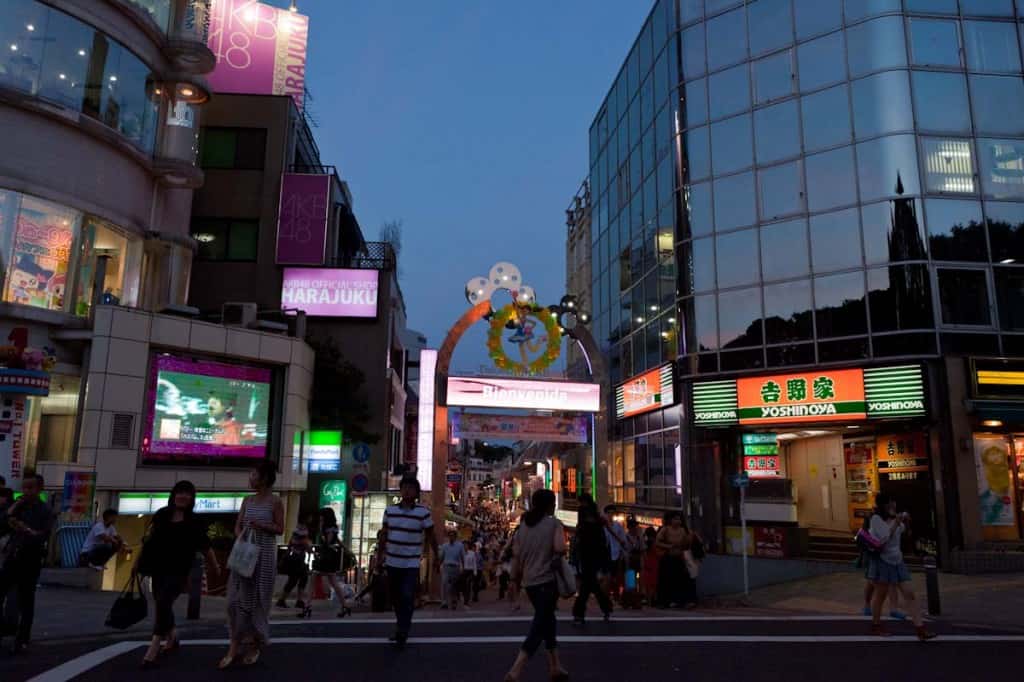
What’s There And Why Visit
This is one of the most architecturally intriguing areas of Tokyo and it is often cited as the birthplace of the kawaii culture, This neighborhood offers a unique blend of shopping for young professionals along with several museums that you will not want to miss.
You may want to try to time your visit to coincide with the neighborhood’s Jingu Gaien Fireworks Festival in mid-August or the Harajuku Omotesando Genki Matsuri Super Yosakoi that attracts over 8,000 dancers from across the country at the end of August.
Suggested hotels near Harajuku
BUDGET FRIENDLY

Comfortable rooms combined with extreme convenience to both Shibuya and Harajuku makes this a winner especially when you consider the price. The compact rooms include a fridge and free wifi.
LUXURY

This is a designer hotel that’s a fusion of traditional Japanese culture and the contemporary view on lifestyle which is quite unique in this area. Guests will enjoy the high ceilings and large windows.
Things to see near Harajuku
Cat Street – The fashion boutiques that line this street are an interesting blend between subculture-inspired Tokyo and brand-driven Tokyo.
Tōgō Jinja Shrine – This small shrine constructed in the 1940s is dedicated to Gensui. A small bookstore there makes a great place to browse.
NHK Studio Park – This is the headquarters building for the nation’s public broadcasters. You can tour the building, try voice dubbing and join the audience during a live television taping.
Tokyu Plaza Omotesando Harajuku – This plaza is a great place to watch the sunset from this plaza’s rooftop.
Getting there
Cat Street – Get off at the Meiji-jingumae Harajuku Station and turn left at the first major road. Walk southeast until you come to the second street and turn left, and then turn right at the first corner to arrive at your destination on your left.
Tōgō Jinja Shrine – Get off at the Meiji-jingumae Harajuku Station and walk north to Takeshita Street, turn west and you will find your destination on your right.
NHK Studio Park – Walk southwest around the edge of Yoyogi Park until you reach this destination.
Tokyu Plaza Omotesando Harajuku – Walk north from the Shibuya Station until you reach this destination.
Suggested activities in Harajuku
Harajuku Owl Cafe Experience – Have a cup of coffee in this unique cafe in Harajuku. Hang out with owls and falcons during your 1-hour visit.
Harajuku Fashion and Street Food Walking Tour – In this 2.5 hour walking tour, do a guided walk through the famous Harajuku district and Omotesando Hills and learn about trend-setting fashion and popular shops that you might not’ve noticed. Includes a guide and a train ticket from Shinjuku to Harajuku.
Harajuku Omotesando Architecture Walking Tour – An insider walking tour of the architectural highlights of Harajuku and Omotesando. You’ll see top attractions and under-the-radar buildings as you learn about the neighborhood’s history. Includes coffee at a shop in one of the atmospheric backstreets.
#3 Ebisu
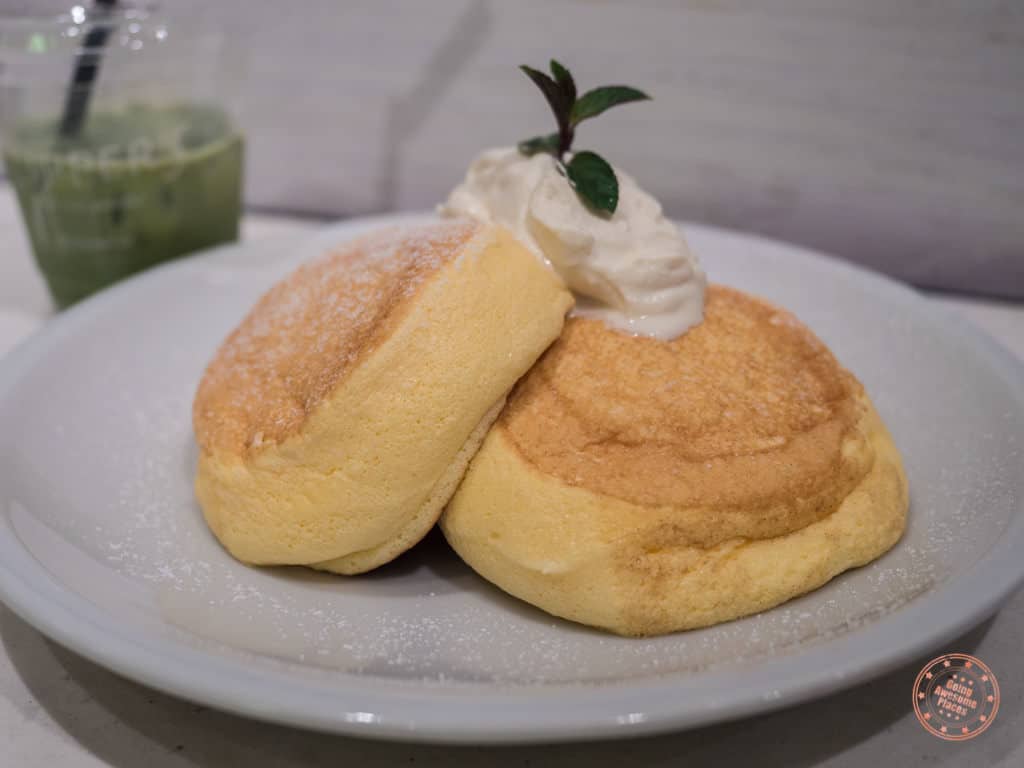
What’s There And Why Visit
This area’s laid-back vibe makes it a great place to escape the hustle and bustle found in many parts of Tokyo. Plus I love that Flipper’s is here which is one of my favourite dessert spots in Tokyo if you head over to the food guide.
Suggested hotels near Ebisu
MID-RANGE

Brand new as of July 2018, you’re going to get a modern and spacious hotel in a convenient location that’s right by a Ebisu JR station. Wifi is free and free breakfast is included as a bonus.
LUXURY

A classic luxury hotel that’s strategically located between Ebisu and Shibuya which isa great choice for travellers interested in atmosphere, local food and city walks.. As you’d expect from a Westin, you get high-level of service and quality all around.
Things to see near Ebisu
Yebisu Garden Place – Made up of about 12 buildings, this area is like a town within Tokyo with its own attractions, great places to dine and places to shop. It is easy to spend all day in this place where Yebisu Beer has been brewed since 1890.
Museum of Yebisu Beer – Take the 40-minute tour where you will learn about the history of Japanese beer. You can also participate in a beer tasting and visit their museum shop.
Tokyo Photographic Art Museum – Located within Yebisu Garden Place, this museum of photography offers many photos from across the city and Japan. You can also see videos and sculptures at times displayed in this museum’s constantly changing showcase.
Ebisu Yokocho – This alley is filled with many small restaurants where you can find a variety of Japanese food including terrific vegan ramen noodles. You may also want to check out the local drinking establishments along this street Consider trying a Matcha Sour made with a shochu base for a cultural treat. The bright luminaries here are worth walking through this area.
Getting there
Yebisu Garden Place – Walk south until you reach your destination.
Museum of Yebisu Beer – Walk south until you reach the Yebisu Garden Place Tower, and then turn right to reach this destination on your right.
Tokyo Photographic Art Museum – Walk south in front of the Yebisu Garden Place Tower and your destination will be on your right.
Ebisu Yokocho – Head north from the Ebisu Station until you reach the Ebisu Statue, then turn right at the next major street. Turn left at the next major street and left again to reach your destination.
Suggested activities in Ebisu
An Elegant Afternoon in Ebisu and Daikanyama – Spend an afternoon exploring Ebisu by having a premium pint, check out a stylish cafe, see all of Tokyo from the observatory there, and relax in a retro Japanese house.
Food Tour of Ebisu – This action packed tour will get you eating at popular food stalls, trying out Japanese specialties, and having a few drinks along the way. You’ll learn about eateries that you never would’ve discovered on your own.
#4 Shinjuku
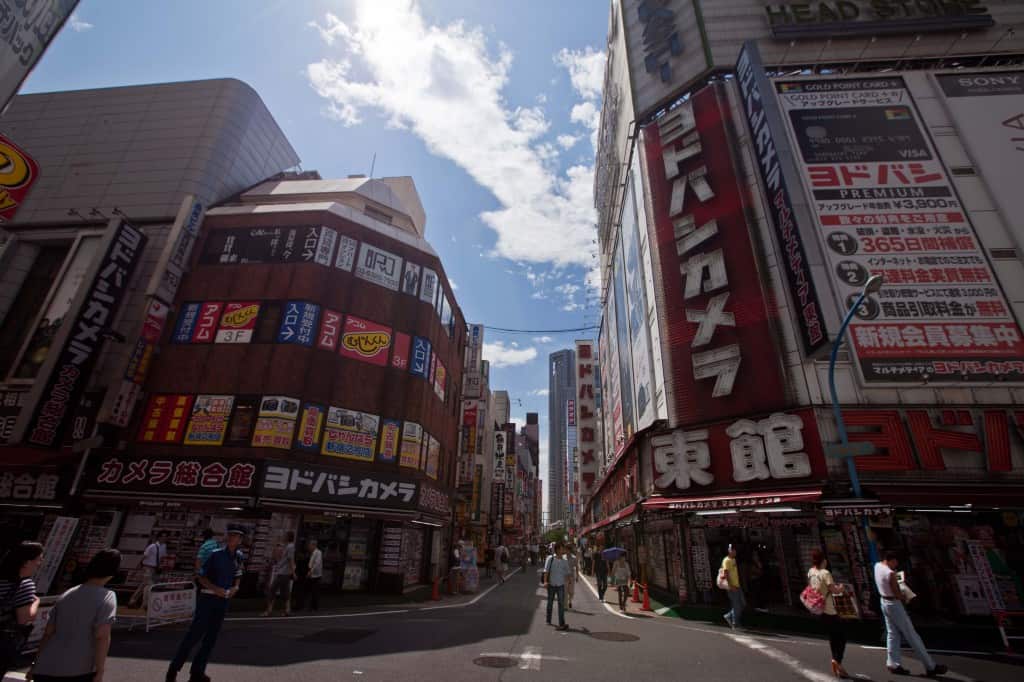
What’s There And Why Visit
This neighborhood is a unique blending of government and businesses along with some of the largest entertainment venues in the city. What it’s really known for from a traveller perspective is their high concentration of bars, small eateries, and electronic stores. If you want to be located to some of the top places to eat in Tokyo, make sure you stay here or spend time to explore Shinjuku.
Suggested hotels near Shinjuku

VERY CHEAP
While the rooms may be tiny, you can’t beat the $70 USD a night stay in Shinjuku. It’s only a 3 minute walk to the JR Shin-Okubo station and 13 minutes from Shinjuku proper. Free wifi is included as well.
LUXURY

A highly rated luxury hotel that opened in April 2015 which combines comfortable rooms, free wifi, convenient restaurant, and convenient location. You’re only 5 minutes from the JR Shinjuku Station and 3 minutes from the Seibu Shinjuku Station.
Things to see near Shinjuku
Shinjuku Skyscraper District – This area is home to some of Tokyo’s tallest buildings. Many offer restaurants on their top floors making them a great place to get an aerial view of the city. The Tokyo Metropolitan Government Office buildings offer free views from their 45th floors.
Shinjuku Gyoen – This green space is a great place to see cherry blossom trees in bloom in April and chrysanthemums in bloom in November.
Kumano Shrine – Located in Central Park, this Kumano shrine is one of 300 spread across Japan. The park is also a great place to see sakura trees along with a man-made waterfall.
Yodobashi Camera– This is the largest store of one of the largest discount electronic retailers in Japan. Nearby, you may also want to visit Yamada Denki and BIC Camera also selling discount electronics.
Getting there
Shinjuku Skyscraper District – To get to the Tokyo Metropolitan Government Office, Tocho-mae Station on the Oedo Subway Line is right below. Alternatively, you can also walk 10 minutes from the west exit of the JR Shinjuku Station.
Shinjuku Gyoen – Head south from the Yotsuya-Sanchome Station and your destination is right in front of you.
Kumano Shrine – Head north from the Minami-Shinjuku Station until you are in front of Tokyo General Hospital, and then turn west until you reach your destination.
Yodobashi Camera – Exit from the west side of Shinjuku Station and across the street is one of Tokyo’s largest electronic shop
Suggested activities in Shinjuku
Shinjuku Samurai Museum – Look back at 800 years of history and learn about the samurai and their significance in Japanese culture. Skip the line with this ticket.
Golden Gai & Kabukicho Izakaya Experience – Looking for a food tour in a neighborhood that is well known for its izakaya, bars, and pubs? Try 4 different Japanese local dishes that everyone will love.
Ninjutsu Ninja Bar in Shinjuku – Ninja themed bar has been opened in Shinjuku area. In this tour you’ll get admission to the Ninja facility, try three dishes, and watch Ninjas perform NINJUTSU while you’re eating your meal.
Shinjuku Robot Restaurant – One-of-a-kind restaurant with laser lights, dancers, and big robots. This ticket saves you the hassle of trying to figure out how to reserve at the restaurant. It’s an all-inclusive experience that comes with admission to the restaurant. Dinner is not included.
Rosetta Stone Japanese is an easy-to-use app to learn Japanese on the go and is focused on everyday language as opposed to grammar and rules.
#5 Ginza
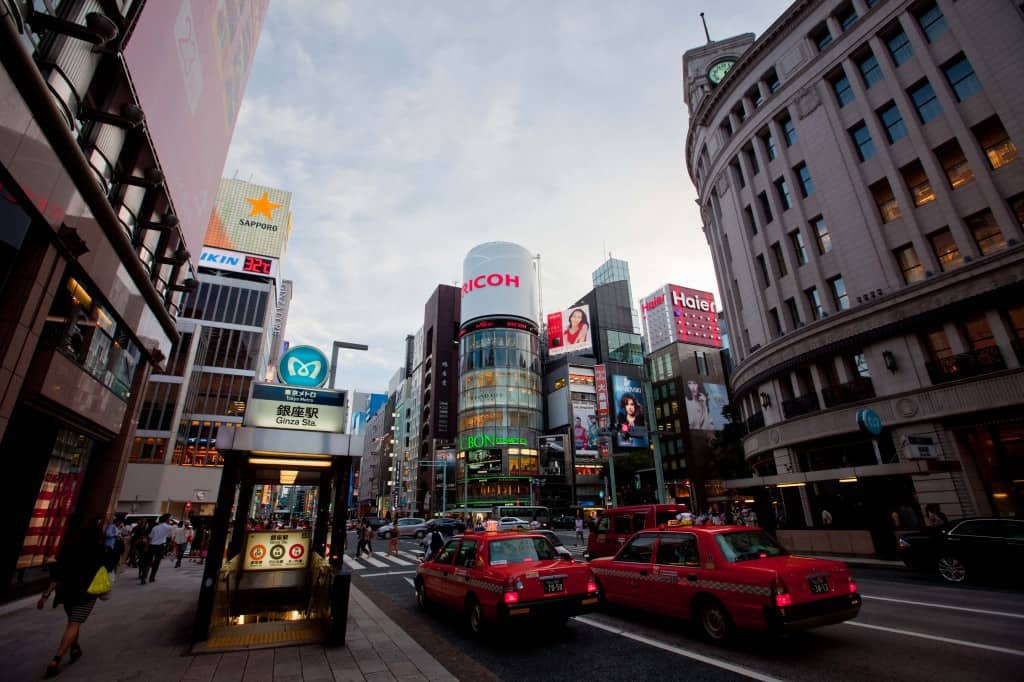
What’s There And Why Visit
Ginza is a high-end shopping district in Tokyo offering brands from around the world, but you will also want to visit this neighborhood’s outdoor spaces and its marvellous theater. There are also more Michelin-star restaurants in Ginza than any other in the city.
Suggested hotels near Ginza
BUDGET FRIENDLY

SOTETSU FRESA INN GINZA SANCHOME
This is a budget Japanese-style business hotel and is located 3 minutes from Metro Ginza Station and Ginza-itchome Station. Free wifi is included but note that rooms are very small.
LUXURY

Get ready to be pampered at the ultra luxurious Peninsula Tokyo. All rooms meld Japanese influences with modern living that come with free wifi, mood lighting, marble bathrooms, and bed-side curtain controls. This is only 3 minutes from the Ginza shopping district.
Things to see near Ginza
Wako Department Store– While you can find fashion, home decor, and many other items at Wako Department store, you will want to check out the unique curved Art Deco architecture of this business that has been in the same location since 1932. Visit the art gallery on the sixth floor during the weekends.
Ginza Six – While you can have plenty of shopping fun at the Ginza Six, you will also want to see the many art installations at this shopping mall. See the constantly changing works of large art by international artists in the atrium. Then, wander through the mall to see numerous little works in shop windows. You will want to visit the rooftop garden for relaxation.
Hakuhinkan Toy Park – This store offers four floors of toys with the third floor being dedicated to your favorite action figures. Head to the top floor to race a toy car on a 118-foot-tall racetrack.
Lion Sapporo Beer Hall– You may feel like you have left Tokyo and traveled to Germany when you visit this beer hall. Even if you are not a drinker, this is worth a stop to see the culture with pre-war Japanese lanterns on every table, tiled motifs showcasing Japanese history on every wall and antique German tables and chairs crammed everywhere.
Kabukiza Theatre – This theater originally opened in 1880, and the building has been remodeled many times. The exaggerated motions of the performers make it easy to understand most storylines even if you cannot understand the words. This building is stunning with its red-tiled roof, Chinese-style camber barge-board, and Japanese-style balustrades. You can buy single-act tickets at the door.
Okuno Apartments – Get a taste of the way that Tokyo looked during the 1930s with a visit to this location. Each tiny apartment holds at least one art gallery, except for room 305 that is set up with period furniture.
Getting there
Wako Department Store – Exit the Ginza Station and it’s right there.
Ginza Six – Exit the Ginza Station and head south at the next major street, and you will find your destination on your right.
Hakuhinkan Toy Park – Exit the Ginza Station, and turn right at the next major street. Your destination will be on the left.
Lion Sapporo Beer Hall – Head south from the Ginza-itchome Station until you reach your destination on your right in about one-half mile.
Kabukiza Theatre – Walk south from the Ginza-itchome Station until you reach the Ginza, and then walk east until you reach the theater on your left.
Okuno Apartments – Exit at the Ginza-itchome Station and look up because it is right there.
Suggested activities in Shinjuku
Private Sushi Making Class and Lunch – Learn how to make sushi from a professional chef at an authentic Ginza restaurant. Finish off with delicious lunch including a small glass of saké
Walking Food Tour of Yarakucho, Shimbashi, and Ginza – This is the tour that I got a chance to go on run by Arigato Japan Food Tours. Watch the video to see what the whole experience is like.
Experience Local Food and Drink on Sunamachi Ginza Delicatessen Street– Go on a Tokyo food-tasting tour on the Sunamachi Ginza shopping street with a local. Sample delicious dishes, interact with vendors, and try new drinks in this 3.5 hour food tour.
#6 Roppongi

What’s There And Why Visit
One of the most diverse areas of Tokyo, this area is often frequented by people from around the world looking for a fun night out. It is centrally located near many of the embassies from around the world. This area also houses some must-see tourist attractions. Many people fine that best hotels to stay in Tokyo are located here.
Suggested hotels near Roppongi
MID-RANGE

You’ll find chic furnishing and modern concepts in the hotel foyer and all suites. The rooms are comfortable and the staff are incredibly friendly. This hotel is 7 minutes walk from the Roppongo Subway Station.
LUXURY

Centrally located in Roppongi Hills, this is exactly what you’re looking for in a luxury hotel with warm wood furnishings, Japanese aesthetics, but completely modern with rain shower head, limestone bathtub, and Japanese robes. Oh it’s fancy!
Things to see near Roppongi
National Art Center Tokyo– This museum lacks a permanent collection. Instead, it lets other organizations use the space to put on art shows. The architecture of this building is another great reason to add it to your Tokyo itinerary.
Roppongi Hills – This building was constructed so that people could live and work in the same space. There are many outstanding restaurants located there. At the center of it is Mori Tower that housing the Mori Art Museum and the Mori Urban Institute for the Future where events are often held. There is also a viewing deck where you can see Tokyo at night. The Mori Garden is a great introduction to Japanese landscaping.
Tokyo Midtown – As of 2019, Tokyo Midtown is the tallest building in the city. There are many attractions inside this mixed-use complex including the Suntory Museum of Art. This complex has artwork from world-famous artists throughout. You can also visit the Fujifilm Square showcasing Fuji’s historical cameras along with iconic photographs and connect with several designers in this complex.
Esprit Tokyo – While you will find many places to party in Roppongi and you might want to join a pub crawl to experience more than one, a great place to visit is Feria. Their lively DJs and the lighted dance floor will help you enjoy your evening.
Getting there
National Art Center Tokyo – This center is connected to Nogizaka Station.
Roppongi Hills – Exit Roppongi Station and look up as you are there.
Tokyo Midtown – From Roppongi Station, head northeast until you get to Mikawadi Park, and then head west until you reach your destination that will be on your life.
Esprit Tokyo – Get off the train at Roppongi Station and look up as it is right there.
Suggested activities in Roppongi
Roppongi Hills Observatory – Skip the line and head up to the 52nd floor of the observatory and spot landmarks like the Tokyo Sky Tree, Tokyo Tower, Rainbow Bridge, and much more. On clear days, you might even spot Mount Fuji in the distance. Another perk about this ticket is that you have admission to the Mori Art Museum just one floor up.
Tokyo Pub Crawl – The famous Tokyo Pub Crawl starts in Roppongi Hills. Get ready for a legendary night with new friends in this 4-hour experience. You get one welcome shot per bar and discounts on drinks.
Private Tour of Roppongo – The City of Culture – Learn more about the neighborhood of Roppongo and Azabu with a private guide. Along the way, try local foods, drinks, and get to know about the buildings that you would’ve been oblivious to if you didn’t go on this tour.
#7. Ueno

What’s There And Why Visit
While most of Tokyo has many tall buildings, you will not find this in Ueno, which is one of the oldest parts of the city. Instead, you will find many wonderful museums to explore along with other great attractions to see.
Suggested hotels near Ueno
BUDGET FRIENDLY

You’re going to love this extremely affordable hotel in the north east part of Tokyo and just 2 minutes from JR Ueno. All rooms include your own private bathroom and free wifi. Ueno Park is also conveniently nearby. Rooms are extremely clean and comfy.
LUXURY

HOTEL COCO GRAND UENO SHINOBAZU
With views overlooking Ueno Park, that is well known for their friendly staff, superb rooms, and facilities such as the spa. The best part is that they include a smartphone that you can take with you which has data access. It is only 3 minutes from the Keisei Ueno Station.
Things to see near Ueno
Ueno Zoo – This is the oldest zoo in Japan, and giant pandas born here have become permanent residents at zoos around the globe. You can also see gorillas, tigers and many other animals. The zoo is also home to a five-story pagoda and a tea ceremony house. Children will adore the petting zoo.
Tokyo National Museum – This museum features one of the largest collections of art and archeological artifacts in the nation including over 100 items that have been declared national treasures. The complex consists of six separate buildings. Written and audio guides are available in English. Just outside this museum is the Kuroda Memorial Hall featuring rotating artwork by Kuroda Seiki who is known as the father of the Western art movement in Japan.
National Museum of Western Art – This museum features artwork from the Renaissance to the early 20th century with much of it being collected by Matsukata Kojiro. The main building was designed by Swiss architect Charles-Edouard Jeanneret-Gris, and it is his only work in the Far East.
National Museum of Nature and Science – A vast array of things including mummies, stuffed pandas, and World War II airplanes can be viewed at this interactive museum. Make sure to take in a show in the 360-degree domed theater.
Shitamachi Museum – This museum allows visitors to see the traditional lifestyle of the Shitamachi. On the first floor, see how a textile worker, a coppersmith, and a merchant may have lived about 1915. On the second floor, see toys along with festival memorabilia.
Shinobazu Pond – This pond is a great place to see birds as over 100,000 often inhabit it. The pond is also an outstanding place to see water plants including a large collection of water lilies.
Getting there
Ueno Zoo – Walk up the stairs to leave Ueno Station, cross the street and walk north to arrive at the zoo in under one mile.
Tokyo National Museum – Walk north from Ueno Station to arrive at Ueno Park, and head northwest in the park to arrive at this destination.
National Museum of Western Art – Exit Ueno Station heading west toward Ueno Park, and walk past the National Museum of Nature and Science to arrive at this location.
National Museum of Nature and Science – Exit Ueno Station heading to the north until you reach Ueno Park on your left, and this museum is on the left just after you enter the park.
Shitamachi Museum – Exit the Ueno Station and walk east until you reach the 7-Eleven, and turn south allowing you to pass in front of the Taito City Hall and the Ueno Marui. Take the road to your right to continue walking south until you reach the museum on your right.
Shinobazu Pond – This pond located in the middle of Ueno Park, and it is easily accessible by getting off at the Ueno Station by walking about 10 minutes to the west.
Suggested activities in Ueno
Ueno Local Market Food Tour – Uncover hidden markets and try authentic Japanese food focused around the neighborhood of Ueno. This tour includes full-size foods, 1 drink and a guide.
Secret Food Tours Tokyo – Another food tour that is very popular for travellers that focuses on Ueno. You’ll have a chance to taste new foods, get a feel for the atmosphere of the area, and be welcomed by locals of the community with this English-speaking tour. The 3 to 3 ½ hours guided food tour includes 9 stops and 6 tastings.
#8 Asakusa
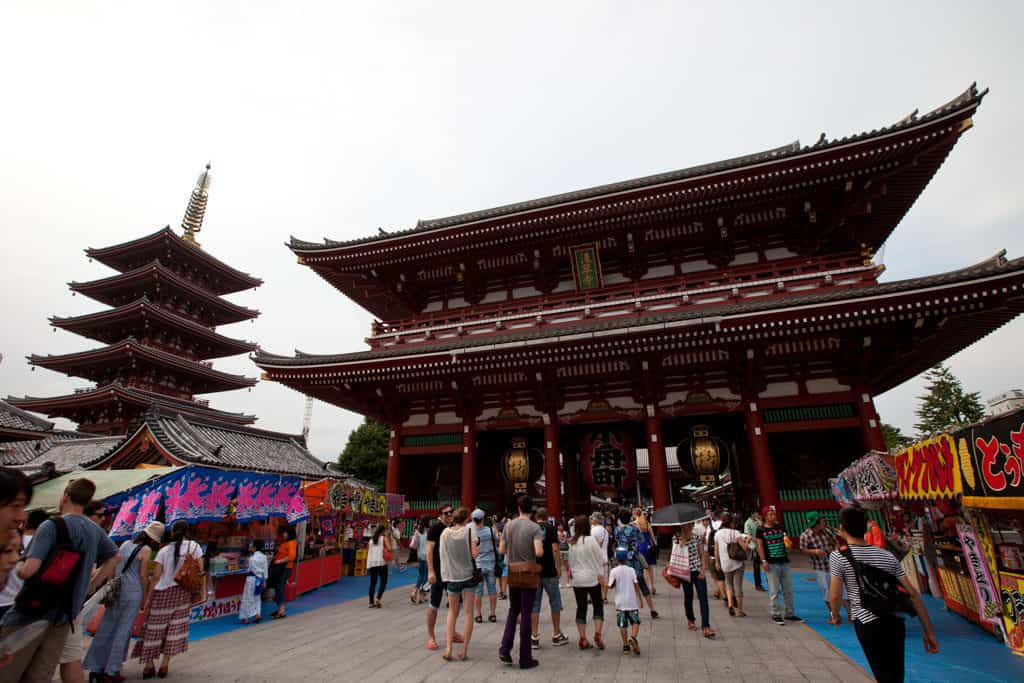
What’s There And Why Visit
This district that was once Tokyo’s entertainment district still has many reasons to visit it including shrines, shopping, and an amusement park.
Suggested hotels near Asakusa
BUDGET FRIENDLY

A reasonably priced hotel that’s only 2 minutes from the Asakusa Station. What I love about this place is that you get pretty amazing views of Tokyo Sky Tree and breakfast is included. Free wifi included.
LUXURY

Luxurious and spacious hotel with epic panoramic city views. This property has their own fitness centre and swimming pool on the 3rd floor. You’re also 5 minutes away from Shibuya Station which makes it incredibly convenient.
Things to see near Asakusa
Sensoji Temple – This Buddhist temple is the oldest in Tokyo, but the buildings are post-war reconstructions of the original ones. You will first see a street lined with souvenir shops and local snacks called Nakamise. Then, you will see the shrine and a five-story pagoda.
Asakusa Shrine – This Shinto shrine was constructed in 1649, and it survived World War II. This shrine celebrates the life of two men who found a statue in the nearby river in 649 along with an intellectual who told them what they had found.
Asakusa Underground Street – You will need to walk down a steep flight of stairs to reach this underground street, but you will be rewarded with gastronomical delights. Make sure to try the stand-and-eat soba restaurant along with the yakisoba with curry sauce. You can find many other things here including fortune tellers and cheap haircuts.
Asakusa Pier – The pier is a great place to catch a river cruise. You can book online or get your tickets once you arrive allowing you to visit the neighborhoods of your choice like Odaiba Seaside Park, Hinode Pier, and Hamarikyu.
Sumida Park – There are over 500 cherry trees in this park lies along the Sumida River. You can enjoy a picnic in this park any time of year, but it is a particularly popular place to visit during the Cherry Blossom Festival in late March and early April. The park is also home to the Sumidagawa Fireworks Festival in late July.
Getting there
Sensoji Temple – Located just a few steps to the left of the Asakusa Station served by the Asakusa Subway Line and Tobu Railways.
Asakusa Shrine – This shrine is located right next door to the Sensoji Temple that is found just a few steps from the Asakusa Station served by the Asakusa Subway Line and Tobu Railways.
Asakusa Underground Street – From the Asakusa Station head towards the Asakusa Shrine and watch for a small billboard and stairs leading to this underground street.
Asakusa Pier – The pier is an easy three-minute walk to the left from Asakusa Station.
Sumida Park – Cross the river from the Asakusa Station and head northeast for about five minutes, and you will arrive at this park.
Suggested activities in Asakusa
MariCar Go Karting Asakusa – We did the experience from the Tokyo Bay location but if you’re based in Asakusa, go from their shop there and have the most surreal experience you can have in Tokyo – driving a go-kart on the real streets in full costume while waving to random strangers.
Asakusa Rickshaw Tour – Take a memorable rickshaw ride through the streets of Asakusa which is regarded as one of the most picturesque neighborhoods in he city. You have your choice between different length of tour and be guided with a knowledgeable driver that will show you everything you need to see.
Samurai Training Experience – Learn the ways of the samurai in this class that teaches you the practice of “Kenbu Tachibana Ittoryu”, the mindset of a Japanese warrior, how to handle a katana, and receive a training certificate at the end.
So there you have it. These are my choices for where to stay in Shanghai. What about you? Do you have suggestions from your experience? Drop a comment below. The more ideas the better!
#9 Akihabara
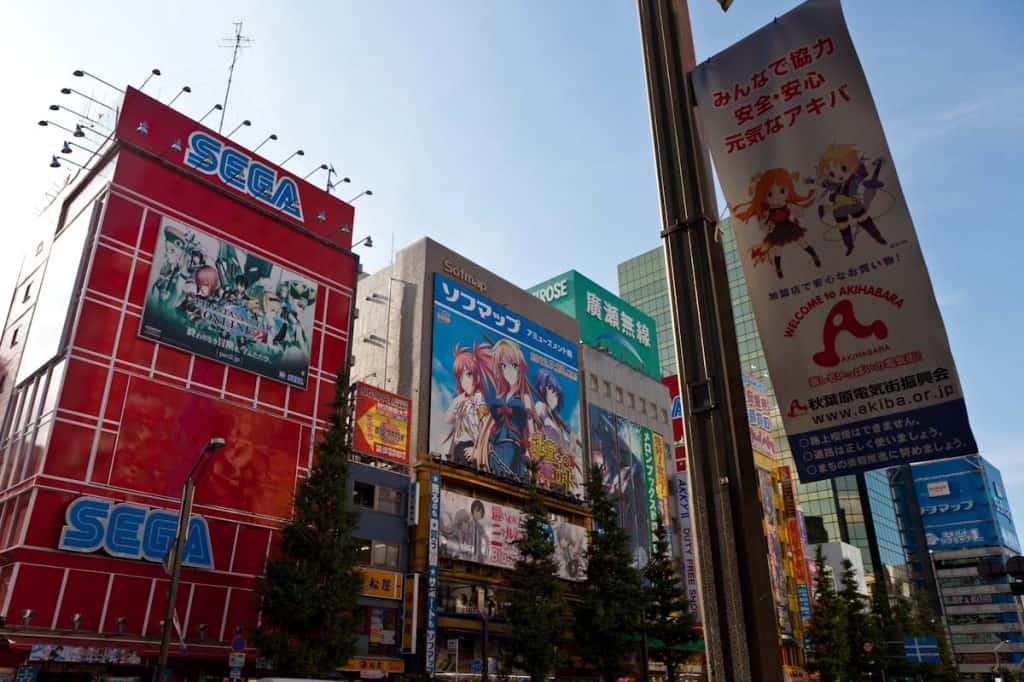
What’s There And Why Visit
Every visit to Tokyo must include this neighborhood that’s filled with multi-level stores dedicated to anime, manga, and anything else collectable. Kids and adults alike love it here because of it’s serious otaku (diehard fan) culture here and how there’s so much to explore. Other things you’ll find here are all the electronic stores in the district as well.
The other reason why this neighorhood is great is because of it’s proximity to the center and being close to subway lines that can take you pretty much anywhere you need to go – making it a great place to stay as well.
Suggested hotels near Akihabara
MID-RANGE
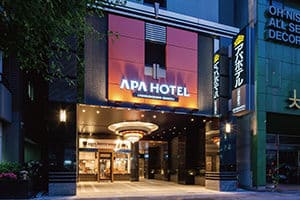
APA HOTEL ASAKUSABASHI-EKIKITA
Relatively new hotel that opened in 2015 that’s close to all of the major stations in Akihabara. Rooms are basic but they all have en-suite bathrooms, wifi is free, and staff are friendly.
MID-RANGE

Another mid-range property that hovers around $100 USD per night. It’s a 1 minute walk away from the JR Akihabara Station and has excellent reviews when it comes to comfortable rooms, 24-hour service, and helpful staff.
Things to see near Asakusa
Mandarake – This is the biggest building for collectibles and anything anime, superheroes, manga, and mascots. On a total of 8 floors, this is a mega-plex that’s fun to explore even if you’re not buying anything.
Kanda Myojin Shrine – This shrine is a great way to get away and find some quiet that is often a special place for IT professionals. It’s supposed to be a place of blessing for new IT ventures in order for them to start with good luck instead of bad.
Donki/Don Quijote – This is a chain of stores that sells things at a discounted price. It’s not quite a 100 JPY store but you can find most things you’ll want to bring home including my favourite food souvenirs from Japan.
Maid Cafe – There are quite a number of these in the neighborhood and is one of those other bizarre cultures that originated here. Maids in cute frilly costumes call you “Master” as you drink coffee or tea. Maidreamin is one of the most popular cafes but if you’re looking for one where you can book ahead of time, make sure to look here.
Yodobashi Camera – Shinjuku isn’t the only neighborhood now that has Yodobashi. If you’re looking to pick up some tax-free goods, you can find anything from computers, games, watches, and cameras here.
Getting there
Mandarake – 4 minutes walk from JR Akihabara Station and across the street from the Don Quijote.
Kanda Myojin Shrine – This shrine is 5 minutes from Akihabara Station or come out of Suehirochō station and walk 1.5 blocks west.
Donki/Don Quijote – 3 minutes walk from the JR Akihabara Station on Sotokanda Street.
Maid Cafe – The Maid cafe bookable experience starts at JR Akihabara Station Denkigai Exit, in front of Midori-no-madoguchi.
Yodobashi Camera – The store is located on the East side of Akihabara Station. It’s a huge building, you won’t miss it.
Suggested activities in Asakusa
Street Cart Go Karting Akihabara – If you’re based in Akihabara, you definitely have to do the MariCar go kart experience that I had a chance to do from Tokyo Bay. Make sure you watch the full video to see how crazy it is.
Akihabara Tour with Maid Guide – Explore the Akihabara district with a personal maid in this sightseeing tour. End off your 2.5 hour tour by going to a real maid cafe.
2 Hour Guided Walking Tour – Learn the history of how the neighborhood of Akihabara developed with a local guide. This is a great tour before you roam around the area yourself because your guide will tell you exactly what to check out and where you should spend your time. You’ll also get a special sushi roll to start off the tour.
So there you have it. These are my choices for where to stay in Tokyo. What about you? Do you have suggestions from your experience? Drop a comment below. The more ideas the better!
What you should read next

Leave a Reply